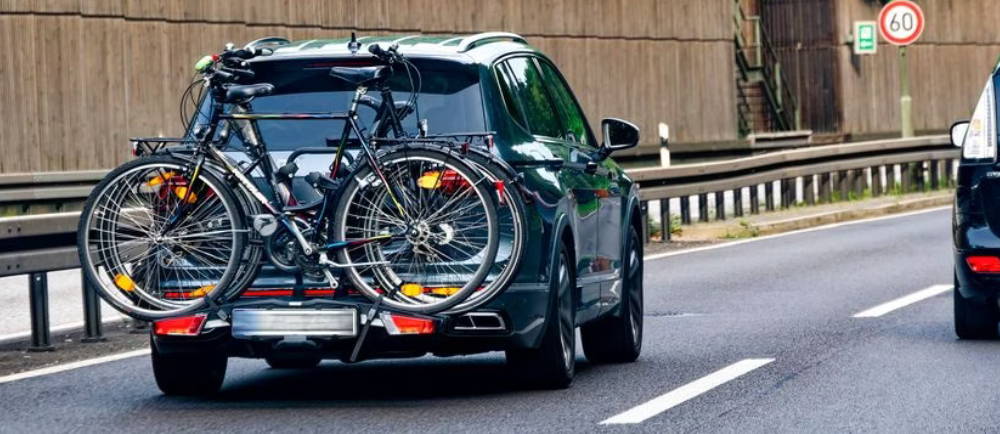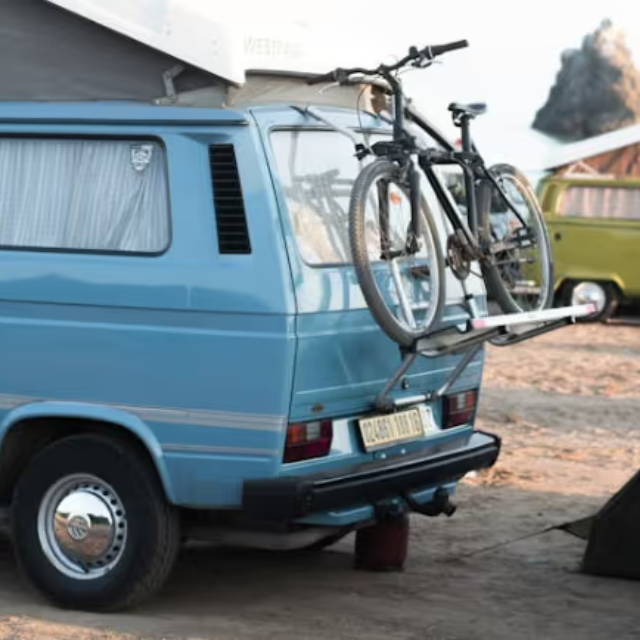Yes— keeping the battery fully or nearly fully charged ensures you have enough range for your next trip and maintains optimal battery charge levels. Modern batteries are much better equipped to avoid problems from overcharging.
How to Transport Your E-Bike Safely This Summer
Written by: Rémy Rossi | June 20, 2024 | Time to read 5 min
Whether you're driving cross-country or just across town, here's how to transport your e-Bike without wrecking your ride.

More about the Author: Remy Rossi
Rémy Rossi is a bike writer, mechanic, and educator who got his start in community-based bike shops and co-ops. With a decade in the industry, he still wrenches on bikes when he can and plays bike polo on a fixie.

👋 What is Upway?
Table of Contents
What is the difference between transporting an e-Bike and a regular bicycle?
- More weight: E-Bikes weigh more than standard, non-motorized bikes, often exceeding a standard bike rack’s payload capacity.
- Battery: You should remove the battery when transporting the bike to save weight and protect it from heavy vibrations and the elements.
- E-Bike value: Electric bikes cost more, so take extra precautions when leaving them in or on your vehicle. Lock the bike to the rack when leaving it unattended.
How do I transport an electric bike?

- Roof rack: E-Bikes are too heavy to be supported properly on top of a car with a roof rack. In addition, it would be extremely difficult to lift a heavy e-Bike above your head to secure it to the roof rack.
- Trunk rack: These racks also can’t typically handle the extra weight of e-Bikes
- Hitch-mounted rack: This is the preferred option for transporting electric bikes. The sturdy hitch mounting system supports plenty of weight for up to four electric bikes on some heavy-duty models.
- Inside the car: You can also transport your bike inside your vehicle. You’ll likely have to remove the wheels and play a bit of Tetris, but it’s doable.
How to use a hitch-mounted rack for electric bikes

Looking for a deal? 🤝 Get an even better discount when you trade in your electric bike now! Click here for a price estimation
Transporting an e-Bike inside the car

Top Tips for Transporting E-Bikes in or on a Vehicle
Use a lock on the rack
Keep your electric bike safe with a quality bike lock connected to the rack. Some premium bike racks come with security features already built in. Remove the lock when driving so the lock doesn’t bang around on the wheels or frame, which could cause damage. But when leaving the car and bikes unattended, make sure to lock them up.
Use a ramp
Electric bikes are heavy, meaning lifting them— even onto a hitch rack that’s near the ground— can be a big effort. Buy a rack that has a ramp feature or make your own to help roll the bike onto the wheel wells of the rack.
Inside a car, use a cover or keep things clean
I’ve stained the interior of many friends’ cars with a greasy bike chain— grease marks have even made it onto the ceiling panels, though I don’t quite know how. Transporting your bike inside your vehicle can be a great solution, but take precautions to keep things clean. Place a large mat or cover down and rest the bike on top of it, preventing any grime, dirt, and grease from getting on the interior of the car.

Transporting e-Bikes with or without a battery?
I highly recommend removing the battery when transporting an electric bike. The bike will be lighter and easier to load without the battery, and it prevents possible theft as well. Batteries are securely attached to the frame, but the heavy vibrations while driving and exposure to extreme temperatures or rain are best avoided altogether.
Frequently Asked Questions
Should I charge my e-Bike after every ride?
Should I remove my e-Bike battery when not in use?
For short-term storage, it’s encouraged to leave the battery on the bike where it’s designed to be. For long-term storage, take it out and keep it at room temperature. Modern chargers are designed to prevent overcharging, but keeping it at 100% charge levels still puts extra stress on the battery.
What is the warranty on Upway bikes?
Upway offers a one-year limited warranty on all its e-Bikes that covers mechanical and electrical defects. We also provide guaranteed delivery and will compensate as warranted in the rare case of any shipping damage.
Key Takeaways
- Use a hitch-mounted rack: Roof and trunk racks often can’t handle an e-Bike’s extra weight.
- Always remove the battery to reduce weight, protect electronics, and prevent theft.
- If transporting inside the vehicle, protect your car’s interior with covers and remove wheels for a better fit.


